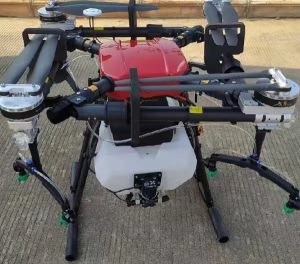Crop protection drones have emerged as a transformative technology in modern agriculture, offering precision and efficiency in pest control and disease management. These unmanned aerial vehicles (UAVs) are equipped with advanced sensors and application systems that allow farmers to target specific areas of their fields with pesticides or beneficial organisms. In this article, we will explore the advantages and applications of crop protection drones.
Key Features and Capabilities:
-
Targeted Application: Crop protection drones can deliver pesticides or beneficial insects to precise locations in the field, reducing chemical use and minimizing environmental impact.
-
Aerial Surveillance: Equipped with cameras and sensors, drones can capture high-resolution images and collect data on crop health, pest infestations, and disease outbreaks from the air. This data aids in early detection and decision-making.
-
Rapid Deployment: Drones can be deployed quickly to respond to emerging pest threats, allowing for timely intervention and reduced crop losses.
-
Versatility: Crop protection drones are not limited to specific crop types; they can be used in a wide range of agricultural settings, including row crops, orchards, vineyards, and greenhouses.
Benefits of Crop Protection Drones:
-
Precision Pest Control: Targeted application minimizes chemical drift and collateral damage to beneficial organisms, promoting pest control sustainability.
-
Enhanced Crop Health: Early detection and intervention result in healthier crops, higher yields, and improved overall farm productivity.
-
Cost Efficiency: Drones can cover large areas efficiently, reducing labor costs and the need for excessive chemical inputs.
-
Environmental Sustainability: Reduced chemical usage and precise application contribute to environmentally friendly farming practices.
Challenges and Considerations:
-
Regulatory Compliance: Farmers must adhere to regulations governing the use of crop protection drones, including licensing and flight restrictions.
-
Initial Investment: Acquiring drones and the necessary technology can be a significant upfront cost, though many farmers find long-term benefits to outweigh this expense.
-
Data Management: Efficient storage, analysis, and interpretation of the data collected by drones are essential for making informed decisions.
In conclusion, crop protection drones are a transformative tool in modern agriculture, offering precision and efficiency in pest control and disease management. Their potential to reduce environmental impact, improve crop health, and enhance sustainability make them a valuable asset to farmers as they work to meet the challenges of feeding a growing global population.







Please sign in to comment
register